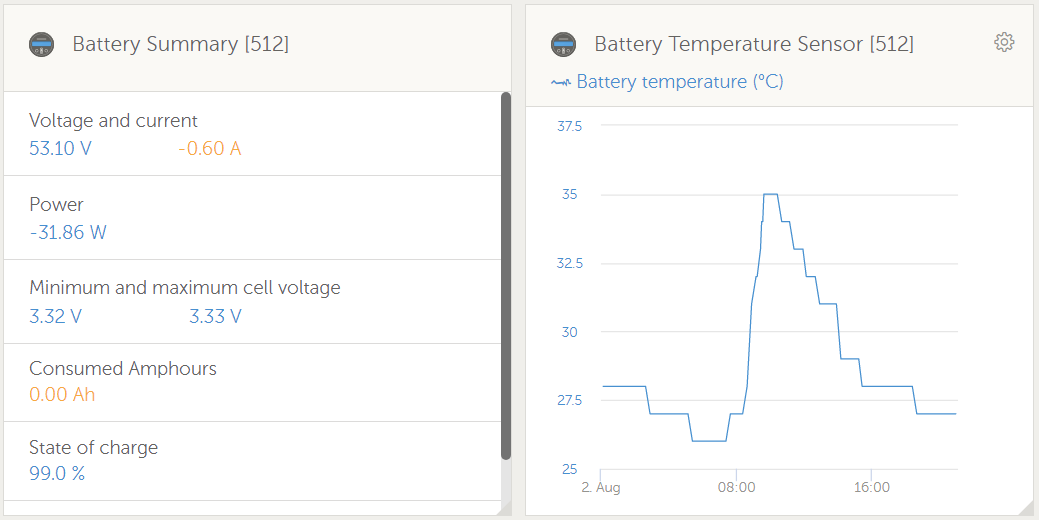Hello I'm quite new and Victron system was started only few days ago. But I'm observing few unexplained situations. Maybe you can help me.
1. Battery ignores minimal SOC (set to 10%) continues discharge until 5%, then starts charging from grid with 4kW until it reaches 10% and then continues with cca 500W to charge until 13% and then starts again discharging.
1.1. I was thinking that when it reaches minimal SOC it will go to idle and stay there until charged by solar panels, what I understand wrong?
1.2. I was thinking that when grid charging is disabled it means battery is not charged from grid, what I understand wrong?
2. If I look at VRM portal I see Grid, AC loads, Battery, PV charger, but when I calculate the sum I miss 100 to 500W, is this own consumption of Victron equipment? (you can calculate from any of the pictures, discharging 'misses' 109W, Charging1 382W, Charging2 188W)
3. UPS functionality does not work, by power outage lights stay, but clock and remote switches got reset, is there a way to fix this?
My system: 16x IBC solar 450 Wp, 3x Victron Multiplus 5000 (three phase setup), 2x Victron MPPT 250/70, 1x BYD LVS 4kWh, 1x Victron color GX
Attached pictures:
Discharging.jpgDischarging: Battery discharging even under 10%
Charging1.jpgCharging2.jpgCharging: How the battery is charged from grid
Expected.jpgExpected: This is what I expect to see when battery is less than 10%, please compare with Discharging picture
Thank you
Peter

